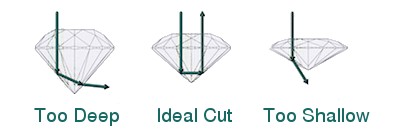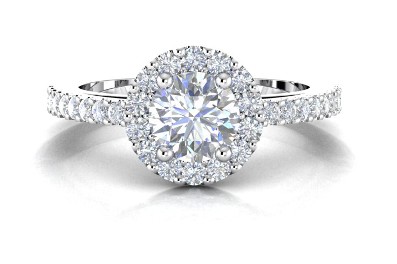Buyer's Guide
Buyer's Guide
Buying a Diamond
Buying a diamond will be a permanent symbol of one of the most important relationships in your life and shouldn't be a daunting experience. To make the experience more enjoyable, it is best to be informed so you can buy with confidence.
Follow our easy guide and get yourself up to speed with all you need to know - or you can speak to one of our experts who will answer all your questions on (08) 9322 7166.
Before you purchase your diamond, or diamond jewellery, there are some things you need to be aware of. At Solid Gold, we advise our clients on the various things they need to consider.
The Basics
Choose your jeweller before you choose your diamond. When you buy a diamond you are automatically relying on the integrity of the company you are buying from, whilst you can and should do your homework, you are never going to have the same level of knowledge as a "qualified" jeweller.
The operative word here is ‘qualified’. Any sales person with a few hours of training can give the impression that they know what they are talking about, chances are, they do not.
Cut
Cut is often confused with the outward appearance of a diamond, which relates to its ‘shape’ (round, pear, etc), because many ‘shapes’ are in fact called ‘cuts’ – including Cushion Cut and Criss Cut.
The ‘cut’ is what determines the way in which light travels through a diamond and reflects back into your eye.
If you compare diamonds on Carat Weight alone, as many do, you can buy a ‘one carat’ diamond for $7,000 or $8,000 and think you have a bargain, when in fact you have paid too much.
For this reason, Cut is given priority over Clarity, Colour and Carat Weight, however it takes an experienced eye to see the difference between a well proportioned diamond and a poorly cut stone. Consequently you should choose your retailer before you choose your diamond.
The illustrations on this page show how this happens and why an Ideal Cut or Fine Cut diamond is brighter and more valuable than a Shallow Cut or Deep Cut stone, but to the casual observer this difference is not always immediately apparent.

Clarity
Diamonds are created by nature under incredible pressure that can cause specific characteristics, known as blemishes or inclusions. Diamonds without flaws or inclusions, are more highly valued because of their rarity. Clarity is graded according to the following system.
| FL | Flawless. No internal or external flaws. Very rare. |
| IF | Internally Flawless. No internal flaws, but some surface flaws. Very rare. |
| VVS1 – VVS2 |
Very, Very Slightly included (two grades). Minute inclusions very difficult to detect under 10x magnification by a trained gemmologist. |
| VS1 - VS2 |
Minute inclusions. Difficult to detect under 10x magnification. |
| SI1 – SI2 |
Slightly Included (two grades). Minute inclusions more easily detected under 10x magnification. |
| I1 – I2 – I3 |
Included (three grades). Inclusions visible to the human eye. |

Colour
Pure white is generally defined as the absence of colour and this is what most people look for in a diamond. The clearer the stone, the more light passes through it allowing it to sparkle more.
HRD and GIA use an internationally accepted system for grading diamonds according to the purity of their colour. On this scale D is the highest standard for a colourless stone and the scale then travels downwards through the alphabet to take into account stones with faint or light traces of yellow.
DEF: Colourless - extremely rare
GHI: Near Colourless - almost no colour to an untrained eye
JKL: Faint Yellow - contain faint traces of yellow
MNO: Very Light Yellow
PQR: Light Yellow
It is important to note that fancy coloured diamonds, such as the famed Argyle Pinks, do not follow these rules and these stones are individually prized because of their great rarity.

Carat Weight
The word ‘carat’ is taken from the carob seeds that were used to balance scales in ancient times, but it is not to be confused with the word ‘karat’, which is the method for determining the purity of gold.
Carat refers to the unit of weight by which a diamond is measured, and because larger diamonds are rarer than their smaller counterparts, the cost of a diamond will usually rise in exponential increments according to its size.
As pointed out previously however, there is far more to valuing a diamond than simply measuring its weight. If the other attributes of Cut, Clarity and Colour are of insufficient quality then the weight of a diamond can in theory be virtually meaningless.
It is the combination of these characteristics that determines the individual value of every stone, which is why an authentic HRD or GIA certificate is so essential to your purchasing consideration.

